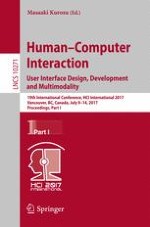2017 | OriginalPaper | Buchkapitel
Generalized Reference
Referring with and Without Language by Matching, Pointer, or Address
verfasst von : Roland Hausser
Erschienen in: Human-Computer Interaction. User Interface Design, Development and Multimodality
Aktivieren Sie unsere intelligente Suche, um passende Fachinhalte oder Patente zu finden.
Wählen Sie Textabschnitte aus um mit Künstlicher Intelligenz passenden Patente zu finden. powered by
Markieren Sie Textabschnitte, um KI-gestützt weitere passende Inhalte zu finden. powered by
